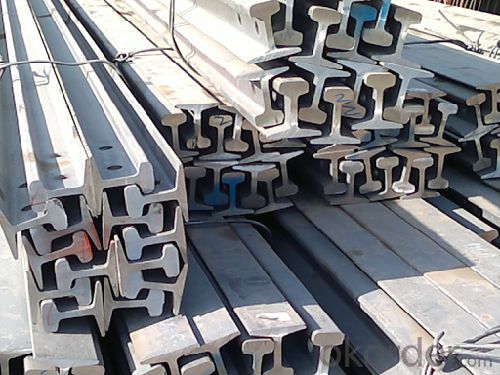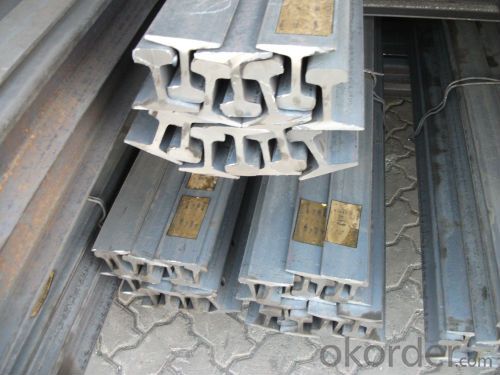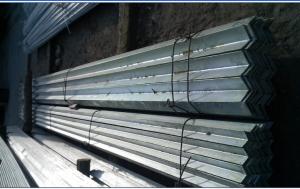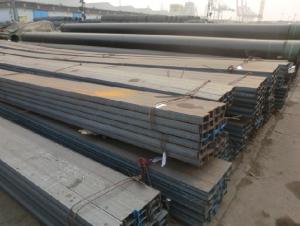HR Steel Rail Light Made in China with High Quality and Competitive Prices
- Loading Port:
- Tianjin
- Payment Terms:
- TT or LC
- Min Order Qty:
- 25 m.t.
- Supply Capability:
- 100000 m.t./month
OKorder Service Pledge
OKorder Financial Service
You Might Also Like
Product Description:
OKorder is offering HR Steel Rail Light Made in China with High Quality and Competitive Prices at great prices with worldwide shipping. Our supplier is a world-class manufacturer of steel, with our products utilized the world over. OKorder annually supplies products to European, North American and Asian markets. We provide quotations within 24 hours of receiving an inquiry and guarantee competitive prices.
Product Applications:
HR Steel Rail Light Made in China with High Quality and Competitive Prices are ideal for structural applications and are widely used in the construction of buildings and bridges, and the manufacturing, petrochemical, and transportation industries.
Product Advantages:
OKorder's HR Steel Rail Light Made in China with High Quality and Competitive Prices are durable, strong, and resist corrosion.
Main Product Features:
· Premium quality
· Prompt delivery & seaworthy packing (30 days after receiving deposit)
· Corrosion resistance
· Can be recycled and reused
· Mill test certification
· Professional Service
· Competitive pricing
Packaging & Delivery:
Packaging Detail: products are packed in bundle and then shipped by container or bulk vessel, deformed bar is usually naked strapping delivery, when storing, please pay attention to moisture proof. The performance of rust will produce adverse effect.
Each bundle weight: 2-3MT, or as required
Payment term: TT or L/C
Delivery Detail: within 45 days after received advanced payment or LC.
Label: to be specified by customer, generally, each bundle has 1-2 labels
Trade terms: FOB, CFR, CIF
FAQ:
Q1: Why buy Materials & Equipment from OKorder.com?
A1: All products offered byOKorder.com are carefully selected from China's most reliable manufacturing enterprises. Through its ISO certifications, OKorder.com adheres to the highest standards and a commitment to supply chain safety and customer satisfaction.
Q2: How do we guarantee the quality of our products?
A2: We have established an advanced quality management system which conducts strict quality tests at every step, from raw materials to the final product. At the same time, we provide extensive follow-up service assurances as required.
Q3: How soon can we receive the product after purchase?
A3: Within three days of placing an order, we will begin production. The specific shipping date is dependent upon international and government factors, but is typically 7 to 10 workdays.
Images:


- Q:How do steel I-beams perform in terms of deflection control?
- Steel I-beams are highly effective in terms of deflection control. The design of I-beams allows them to distribute loads evenly, minimizing deflection and ensuring structural stability. Their strong and rigid nature helps them resist bending, twisting, and sagging, making them an excellent choice for applications where deflection control is crucial, such as in building construction and bridge engineering.
- Q:Can steel I-beams be used in parking garages or structures?
- Yes, steel I-beams are commonly used in parking garages and structures due to their high strength and load-bearing capacity. They provide structural support and can withstand heavy loads, making them suitable for such applications.
- Q:Can steel I-beams be used for industrial machinery?
- Absolutely, industrial machinery can indeed utilize steel I-beams. Renowned for their robustness and resilience, steel I-beams prove themselves versatile in a multitude of industrial applications. With their exceptional structural integrity and capacity to bear heavy loads, they excel at providing unwavering support for hefty machinery and equipment. Furthermore, their ability to endure immense pressure and furnish a steadfast and secure framework renders them a preferred choice in factories, production facilities, and other industrial environments necessitating sturdy support structures.
- Q:How do steel I-beams handle lateral loads, such as wind or earthquakes?
- Steel I-beams have been purposely designed to effectively withstand lateral loads, such as wind or earthquakes. The I-shaped cross-section of these beams imparts exceptional structural strength and rigidity, making them ideal for withstanding horizontal forces acting perpendicular to their length. Regarding wind loads, the shape of the I-beam aids in evenly distributing the force along its length, thereby minimizing the likelihood of localized failure. The top and bottom flanges of the beam are specifically engineered to resist bending moments and shear forces, while the web, connecting the flanges, facilitates load transfer between them. By combining these components, an efficient load-carrying system is achieved, effectively countering lateral forces produced by wind. Similarly, when confronted with earthquakes, steel I-beams demonstrate their aptitude in handling resultant lateral ground movements. The inherent stiffness of steel, in conjunction with the I-beam's shape, allows for dissipation of seismic energy through flexion and deformation rather than collapse. The I-beam's ability to distribute the load uniformly along its entire length diminishes concentrated stress at any particular point, thus rendering it more resistant to seismic events. To further enhance the capacity of I-beams to handle lateral loads, engineers may incorporate additional design features. These may encompass bracing systems, such as diagonal or cross-bracing, which further fortify the beam against lateral forces. Additionally, ensuring comprehensive load paths and augmenting overall structural integrity can be achieved by appropriately fastening and connecting the I-beams to other structural elements, such as columns and foundations. In summary, steel I-beams possess the requisite strength, shape, and capacity to distribute and dissipate forces, making them highly suitable for handling lateral loads like wind or earthquakes. Consequently, they are frequently favored in construction projects where resilience against these types of loads is imperative.
- Q:Can steel I-beams be used for healthcare facilities?
- Yes, steel I-beams can be used for healthcare facilities. Steel I-beams are commonly used in construction for their strength and durability, making them suitable for a variety of applications including healthcare facilities. These beams provide structural support and can be used for framing walls, floors, and roofs, ensuring the stability and integrity of the building. Additionally, steel I-beams are fire-resistant, which is crucial for healthcare facilities where safety is of utmost importance. Furthermore, steel is a sustainable and recyclable material, aligning with the growing green building practices in the healthcare industry. Overall, steel I-beams are a reliable and practical choice for constructing healthcare facilities.
- Q:What are the common defects or issues found in steel I-beams?
- Some common defects or issues found in steel I-beams include corrosion, cracks, bending or warping, and improper welding or fabrication. These defects can weaken the structural integrity of the I-beams and compromise their load-bearing capacity. Regular inspections and maintenance are necessary to identify and address these issues promptly to ensure the safety and durability of the steel I-beams.
- Q:Are there any building codes or regulations that govern the use of steel I-beams?
- Steel I-beams in construction are subject to building codes and regulations that vary by country and jurisdiction. These guidelines govern the design, installation, and structural integrity of steel I-beams. In the United States, the International Building Code (IBC) regulates the use of steel I-beams and is adopted by most states and local jurisdictions. The IBC sets minimum requirements for building design and construction, including specifications for steel I-beams. It covers aspects such as beam size, shape, strength, and the connections and fasteners to be used. Different types of construction, such as residential, commercial, and industrial buildings, have specific codes and standards for steel I-beam usage. The American Institute of Steel Construction (AISC) provides standards for designing and constructing steel structures, including guidelines for steel I-beams. Other countries have their own building codes and regulations for steel I-beams, often based on international standards set by organizations like the International Organization for Standardization (ISO) and the European Committee for Standardization (CEN). To ensure the safety and structural integrity of buildings, architects, engineers, and builders must comply with these building codes and regulations. Failure to do so can lead to legal consequences and jeopardize the safety of occupants and the overall performance of the structure. Hence, it is crucial to consult and follow the relevant building codes and regulations when using steel I-beams in construction projects.
- Q:Shape steel bending machine to make 18 I-beam, how to calculate the radian?
- Cold bending machine, also known as curved arch machine, is mainly used in tunnels, subways, hydropower stations, underground chambers, such as I-beam, channel steel, angle steel, U steel and other profiles bending. Bending machine is a new equipment for tunnel support steel arch manufacture. It consists of six parts, such as pedestal, mechanical transmission, cold bending system, hydraulic system, electric control system and auxiliary system.
- Q:What are the common finishes for steel I-beams?
- The common finishes for steel I-beams include hot-dip galvanizing, priming and painting, and powder coating. Hot-dip galvanizing is a process that involves coating the steel I-beam with a layer of zinc, protecting it from corrosion and ensuring its longevity. This finish is commonly used in outdoor applications where the I-beam will be exposed to moisture or harsh environmental conditions. Priming and painting is another common finish for steel I-beams. It involves applying a layer of primer to the surface of the I-beam to enhance adhesion, followed by one or more coats of paint. Priming and painting not only provide a protective barrier against corrosion but also allow for customization in terms of color and appearance. Powder coating is a finish that involves electrostatically applying a dry powder onto the surface of the I-beam. The powder is then cured under heat, forming a hard and durable finish. Powder coating offers excellent corrosion resistance, as well as a wide range of color options and a smooth, even appearance. It is worth mentioning that the choice of finish for steel I-beams depends on the specific requirements of the application. Factors such as the environment, aesthetic preferences, and level of corrosion resistance needed should be taken into consideration when selecting the appropriate finish for steel I-beams.
- Q:Are steel I-beams suitable for earthquake-prone areas?
- Yes, steel I-beams are generally considered suitable for earthquake-prone areas. Steel is a strong and ductile material that can withstand the dynamic forces and vibrations caused by earthquakes. I-beams, specifically, provide structural stability and resistance to bending and shearing forces, making them effective in earthquake-resistant construction. Additionally, steel is a lightweight material, which allows for flexible designs and easier transportation, making it a popular choice in seismic zones. However, it is important to consider other factors like proper engineering, construction techniques, and adherence to seismic codes and regulations to ensure the overall safety and resilience of structures in earthquake-prone areas.
1. Manufacturer Overview |
|
|---|---|
| Location | |
| Year Established | |
| Annual Output Value | |
| Main Markets | |
| Company Certifications | |
2. Manufacturer Certificates |
|
|---|---|
| a) Certification Name | |
| Range | |
| Reference | |
| Validity Period | |
3. Manufacturer Capability |
|
|---|---|
| a)Trade Capacity | |
| Nearest Port | |
| Export Percentage | |
| No.of Employees in Trade Department | |
| Language Spoken: | |
| b)Factory Information | |
| Factory Size: | |
| No. of Production Lines | |
| Contract Manufacturing | |
| Product Price Range | |
Send your message to us
HR Steel Rail Light Made in China with High Quality and Competitive Prices
- Loading Port:
- Tianjin
- Payment Terms:
- TT or LC
- Min Order Qty:
- 25 m.t.
- Supply Capability:
- 100000 m.t./month
OKorder Service Pledge
OKorder Financial Service
Similar products
New products
Hot products
Hot Searches
Related keywords






























